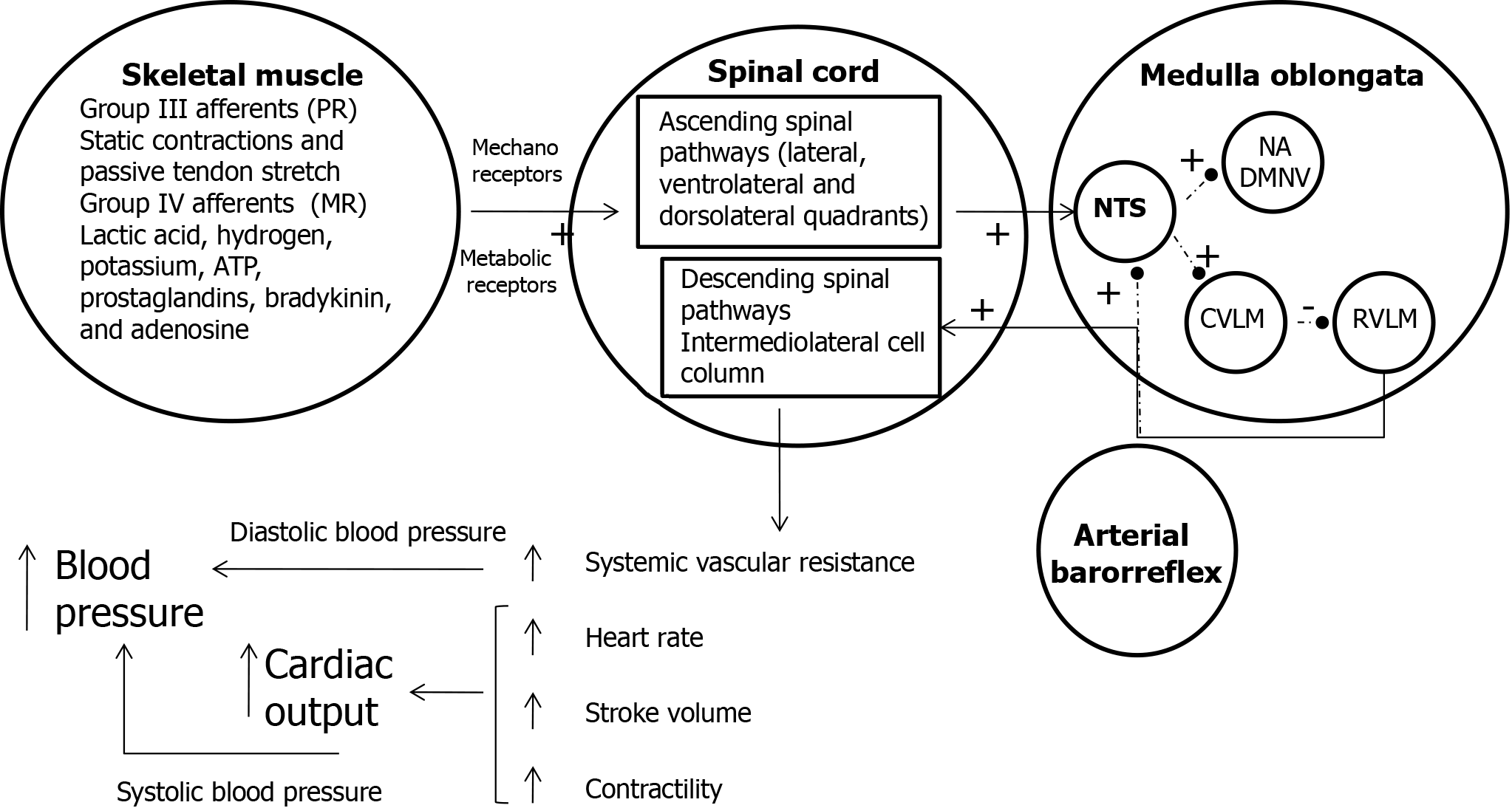Copyright
©The Author(s) 2025.
World J Crit Care Med. Sep 9, 2025; 14(3): 101462
Published online Sep 9, 2025. doi: 10.5492/wjccm.v14.i3.101462
Published online Sep 9, 2025. doi: 10.5492/wjccm.v14.i3.101462
Figure 4 The combined action of the muscle metaboreflex, central command, and baroreceptors in cardiovascular regulation during exercise.
Upon the initiation of exercise, type III afferent fibers are stimulated by static muscle contraction and passive tendon stretch through mechanoreceptors (pressure response), while type IV afferent fibers are activated by the accumulation of metabolic byproducts. Ascending spinal pathways, mediated by various neurotransmitters, then stimulate the nucleus tractus solitarius (NTS) in the brainstem, generating an inhibitory response. Under normal conditions (indicated by dotted lines), the NTS regulates parasympathetic activity via the nucleus ambiguous and dorsal motor nucleus of the vagus, as well as sympathetic activity via the caudal ventrolateral medulla and rostral ventrolateral medulla (RVLM), in response to arterial baroreflex stimulation. When the NTS is inhibited, this leads to stimulation of the RVLM and inhibition of the nucleus ambiguus, dorsal motor nucleus of the vagus, and caudal ventrolateral medulla. Stimulation of the RVLM activates the intermediolateral cell column, which results in an increase in systemic vascular resistance, along with enhanced stroke volume, heart rate, and myocardial contractility. Together, these changes increase cardiac output. The rise in systemic vascular resistance contributes to an increase in diastolic pressure, while the augmentation of cardiac output raises systolic blood pressure. This integrated response ensures the maintenance of hemodynamic stability during exercise. PR: Pressure reflex; MR: Metabolic reflex; NTS: Nucleus tractus solitarius; NA: Nucleus ambiguous; DMNV: Dorsal motor nucleus of the vagus; CVLM: Caudal ventrolateral medulla; RVLM: Rostral ventrolateral medulla.
- Citation: Previgliano IJ, Aboumarie HS, Tamagnone FM, Merlo PM, Sosa FA, Feijoo J, Carruega MC. Point of care ultrasound evaluation of cardio-cerebral coupling. World J Crit Care Med 2025; 14(3): 101462
- URL: https://www.wjgnet.com/2220-3141/full/v14/i3/101462.htm
- DOI: https://dx.doi.org/10.5492/wjccm.v14.i3.101462









